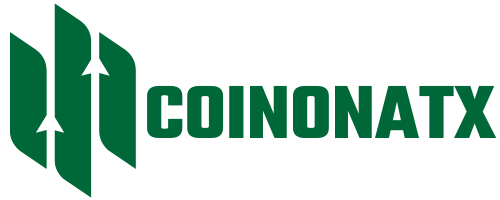When considering the journey towards acquiring a new vehicle, the financing aspect plays a crucial role. Various institutions offer tailored financial products designed to meet diverse needs, ensuring that potential buyers can navigate their options effectively. Understanding the available choices can empower individuals to make informed decisions that align with their financial situations.
Why Choose a Bank for Auto Financing?
Opting for a financial institution to assist with vehicle purchases offers numerous advantages. It provides structured payment plans, competitive interest rates, and reliable customer service, ensuring a smooth and efficient experience. Choosing a reputable lender enhances the credibility of the financing process, fostering trust and security in managing your investment.
Banks often present attractive interest rates, making it easier for borrowers to manage monthly payments. These rates can be more favorable compared to alternative sources, helping individuals save on overall costs. By comparing offers, potential buyers can identify the most suitable option tailored to their financial situation.
Access to dedicated customer service is another significant benefit. Financial experts are available to guide clients through the application process, answer queries, and provide insights on various financing options. This personalized assistance helps borrowers make informed decisions, ensuring they select a plan that aligns with their budget and long-term goals.
Key Factors to Consider when Choosing a Bank
When evaluating options in the current landscape, certain aspects stand out as critical to making informed decisions. Understanding these elements can significantly impact the overall experience and financial outcome. Factors such as interest rates, repayment terms, and customer service play a pivotal role in ensuring that individuals choose the most suitable offerings for their needs.
Interest Rates and Fees: The cost of borrowing remains a primary consideration. Variations in interest rates can influence monthly payments and total expenditures over time. It’s essential to compare annual percentage rates (APRs) and any associated fees that might affect the overall cost.
Repayment Flexibility: Flexibility in repayment terms is another important element. Options for longer repayment periods or the ability to make extra payments without penalties can enhance the borrowing experience, allowing individuals to manage their finances more effectively.
| Factor | Description |
| Interest Rates | Comparative rates that influence overall cost. |
| Fees | Any additional costs that may apply. |
| Repayment Terms | Options available for paying off the amount borrowed. |
| Customer Support | Quality of assistance provided throughout the process. |
| Approval Process | Speed and ease of obtaining the necessary approvals. |
Fixed vs. Variable Interest Rates
Understanding the differences between fixed and variable interest rates is crucial when considering financing options. Each type offers distinct advantages and disadvantages that can significantly impact overall costs and payment strategies. It’s essential to evaluate your financial situation and preferences before making a decision.
| Feature | Fixed Interest Rate | Variable Interest Rate |
| Payment Stability | Consistent monthly payments throughout the term | Payments may fluctuate based on market conditions |
| Initial Rates | Typically higher than initial variable rates | Often lower at the start, but can increase |
| Long-term Costs | Predictable and easier to budget for | Potential for lower long-term costs if rates remain stable |
| Risk Level | Lower risk due to fixed payments | Higher risk if rates increase significantly |
| Flexibility | Less flexible as rates are locked in | More flexible, with potential for lower payments |
Options for Short and Long Repayment Plans
Understanding the implications of both short and extended repayment plans can significantly influence decision-making, affecting overall affordability and financial health.
Short repayment plans typically involve higher monthly payments but allow borrowers to settle their obligations more quickly. This approach can lead to substantial interest savings over time, making it an attractive option for those who can manage the increased payment amounts. Additionally, a shorter term can enhance financial flexibility sooner, enabling individuals to allocate funds towards other investments or savings.
On the other hand, long repayment plans generally feature lower monthly installments, making them more manageable for those with tighter budgets. While this option provides immediate relief in terms of cash flow, it may result in paying more interest overall. Borrowers should carefully assess their long-term financial goals and how a prolonged repayment period aligns with their overall budgetary constraints.
Ultimately, the choice between these two types of repayment options depends on individual circumstances, including income stability, financial goals, and personal preferences. It’s essential to weigh the benefits and drawbacks of each plan to determine the most suitable path forward.
How Loan Tenure Affects Monthly Payments
Understanding the duration of a financing agreement is crucial, as it directly influences the amount you pay each month. A shorter period often results in higher installments, while a longer term can ease immediate financial burdens but may increase the total cost over time.
Shorter Tenure: Higher Payments
Choosing a reduced financing duration can lead to several outcomes:
- Increased monthly installments, which may strain your budget.
- Less interest accrued over the life of the contract, resulting in lower overall costs.
- Faster equity build-up, allowing you to own the asset outright sooner.
Longer Tenure: Lower Payments
Opting for an extended duration can offer distinct advantages and disadvantages:
- Lower monthly payments, making it easier to manage finances.
- More interest paid over the term, potentially increasing the total expenditure.
- Longer commitment, which may impact future financial decisions and flexibility.
Top 5 Philippine Banks for Auto Loans in 2024
Here are the top Philippine banks offering competitive auto loans in 2024, known for their flexible terms and competitive rates:
1. BDO Unibank
- Interest Rate: Starts at 6.50% per annum
- Loan Term: Up to 6 years
- Features:
- Offers flexible payment terms.
- Fast processing and approval time.
- Covers new, pre-owned, and refinancing options.
2. Bank of the Philippine Islands (BPI)
- Interest Rate: Starts at 6.55% per annum
- Loan Term: Up to 6 years
- Features:
- Online application for convenience.
- Competitive interest rates for new car loans.
- Offers financing for pre-owned cars as well.
3. Metrobank
- Interest Rate: Starts at 6.58% per annum
- Loan Term: Up to 5 years
- Features:
- Offers high loanable amounts with flexible terms.
- Quick approval process.
- Loan covers both new and pre-owned cars.
4. Security Bank
- Interest Rate: Starts at 6.57% per annum
- Loan Term: Up to 5 years
- Features:
- Simple online loan application process.
- Fast approval time, often within a day.
- Offers both brand-new and second-hand vehicle loans.
5. PSBank (Philippine Savings Bank)
- Interest Rate: Starts at 6.35% per annum
- Loan Term: Up to 5 years
- Features:
- PSBank offers one of the fastest approval processes.
- Flexible payment schemes.
- Loan can cover both new and used cars.
These banks offer competitive rates, but actual interest rates and terms may vary based on your credit profile, the car dealer, and promotions offered at the time. It’s always best to check with each bank for updated rates and deals.
Required Documents for Car Loan Approval
When seeking financial assistance to purchase a vehicle, it is essential to prepare a set of necessary paperwork. This documentation not only verifies your identity and financial status but also streamlines the approval process, ensuring a smoother experience. Below is a comprehensive list of documents typically required by lenders.
- Valid Identification:
- Government-issued ID (e.g., passport, driver’s license)
- Employee ID (if applicable)
- Proof of Income:
- Recent payslips (usually last three months)
- Certificate of employment
- Income tax return (ITR)
- Bank statements (if self-employed)
- Credit History:
- Credit report (may be requested by the lender)
- Proof of Address:
- Utility bill (water, electricity, etc.)
- Lease agreement or property title
- Vehicle Information:
- Proforma invoice from the dealership
- Vehicle reservation or order form
Being organized and having all required documents ready can significantly enhance the chances of quick approval and facilitate a hassle-free experience when acquiring your new vehicle.
Auto Loan Application Process
Navigating the process of securing financing can often seem daunting, but understanding the steps involved can simplify the experience significantly. This section outlines a streamlined approach to applying for funding, ensuring a smoother journey from start to finish.
Steps to Follow
1. Assess Your Financial Situation
Begin by evaluating your current financial health. Review your income, expenses, and existing debts. This assessment will help you determine how much you can afford to borrow and repay.
2. Research Options
Investigate various lending institutions and their offerings. Look into interest rates, terms, and any additional fees. Compare these options to identify which aligns best with your needs.
3. Gather Necessary Documentation
Prepare all required documents, including proof of income, identification, and vehicle details. Having everything organized will expedite the application process.
4. Complete the Application
Fill out the application form accurately, providing all requested information. Be honest about your financial situation to avoid complications later on.
5. Review Terms and Conditions
Once your application is processed, carefully review the terms and conditions presented. Make sure you understand all aspects, including repayment schedules and penalties for late payments.
6. Finalize and Sign
If satisfied with the terms, proceed to finalize the agreement. Ensure you read everything thoroughly before signing to avoid any surprises.
7. Receive Funds and Make Purchases
After approval, you will receive the funds. You can then proceed to make your vehicle purchase, keeping in mind to follow any guidelines provided by the lender.
Tips for a Smooth Experience
- Maintain a good credit score to improve your chances of approval.
- Be honest in your application to avoid complications later on.
- Consider consulting with a financial advisor for personalized guidance.
- Don’t hesitate to ask questions about anything unclear in the process.
Consider the Special Programs
In 2024, various financial institutions are introducing innovative initiatives aimed at enhancing the experience of customers seeking vehicle financing. These offerings include promotional interest rates, flexible payment terms, and unique incentives tailored to meet diverse needs.
- Promotional Interest Rates: Many lenders are providing limited-time offers with lower interest rates to attract new clients. This initiative can significantly reduce the overall cost of financing.
- Flexible Payment Plans: Institutions are increasingly allowing borrowers to customize their repayment schedules, enabling them to choose terms that align with their financial situations.
- Cashback Rewards: Some companies are offering cashback incentives for timely payments, which can provide additional financial relief for borrowers.
- Zero Down Payment Options: Certain providers are introducing zero down payment schemes, making it easier for individuals to acquire a vehicle without a hefty initial investment.
- Partnership Discounts: Collaborations with automobile dealerships can lead to exclusive discounts and perks for customers, enhancing the overall purchasing experience.
These initiatives are designed to support a wider range of consumers, ensuring that financing a vehicle becomes more accessible and convenient in the current economic landscape.
What are the top banks for auto loans in the Philippines in 2024?
As of 2024, some of the top banks for auto loans in the Philippines include BDO Unibank, Metrobank, Bank of the Philippine Islands (BPI), Security Bank, and RCBC. These banks are recognized for their competitive interest rates, flexible payment terms, and excellent customer service. It’s advisable to compare their offers based on your specific needs, such as loan amount and repayment period.
What factors should I consider when choosing a bank for an auto loan?
When selecting a bank for an auto loan, consider several factors: interest rates, loan terms, processing fees, and prepayment options. It’s also important to look into the bank’s reputation for customer service, the speed of loan approval, and any promotional offers that may be available. Additionally, check if the bank has partnerships with car dealerships, as this can simplify the loan process.
How can I improve my chances of getting approved for an auto loan?
To enhance your chances of approval for an auto loan, ensure you have a good credit score, as this significantly impacts lending decisions. Gather necessary documents such as proof of income, employment verification, and identification. Reducing your existing debt and ensuring a stable job can also improve your profile. Finally, consider applying with a co-borrower who has a strong credit history.
What is the typical loan term for an auto loan in the Philippines?
The typical loan term for an auto loan in the Philippines ranges from 1 to 5 years, although some banks may offer terms up to 7 years. Shorter loan terms usually come with higher monthly payments but lower overall interest costs, while longer terms can reduce monthly payments but may lead to paying more interest over time. It’s essential to choose a term that aligns with your budget and financial goals.




Leave a Reply